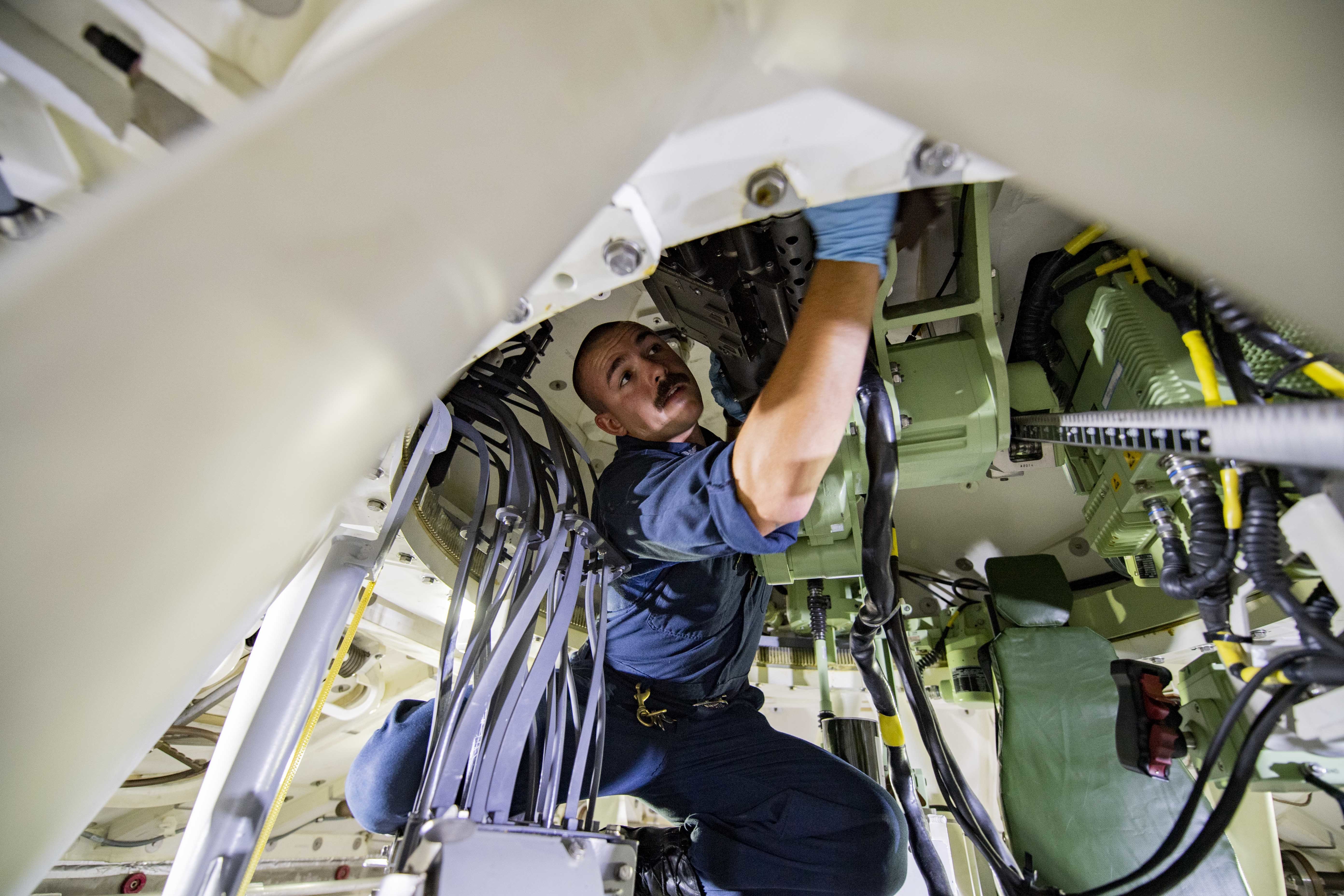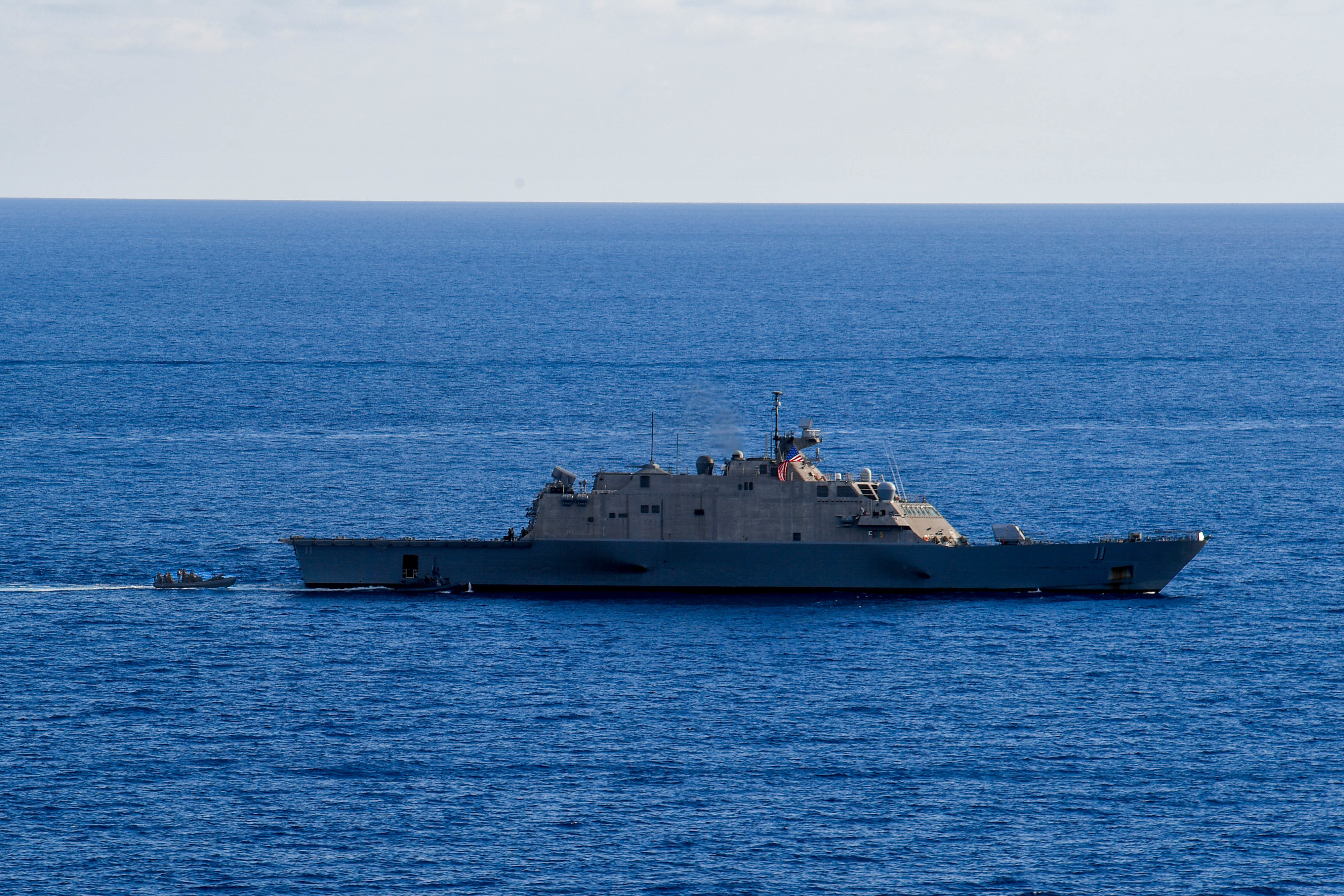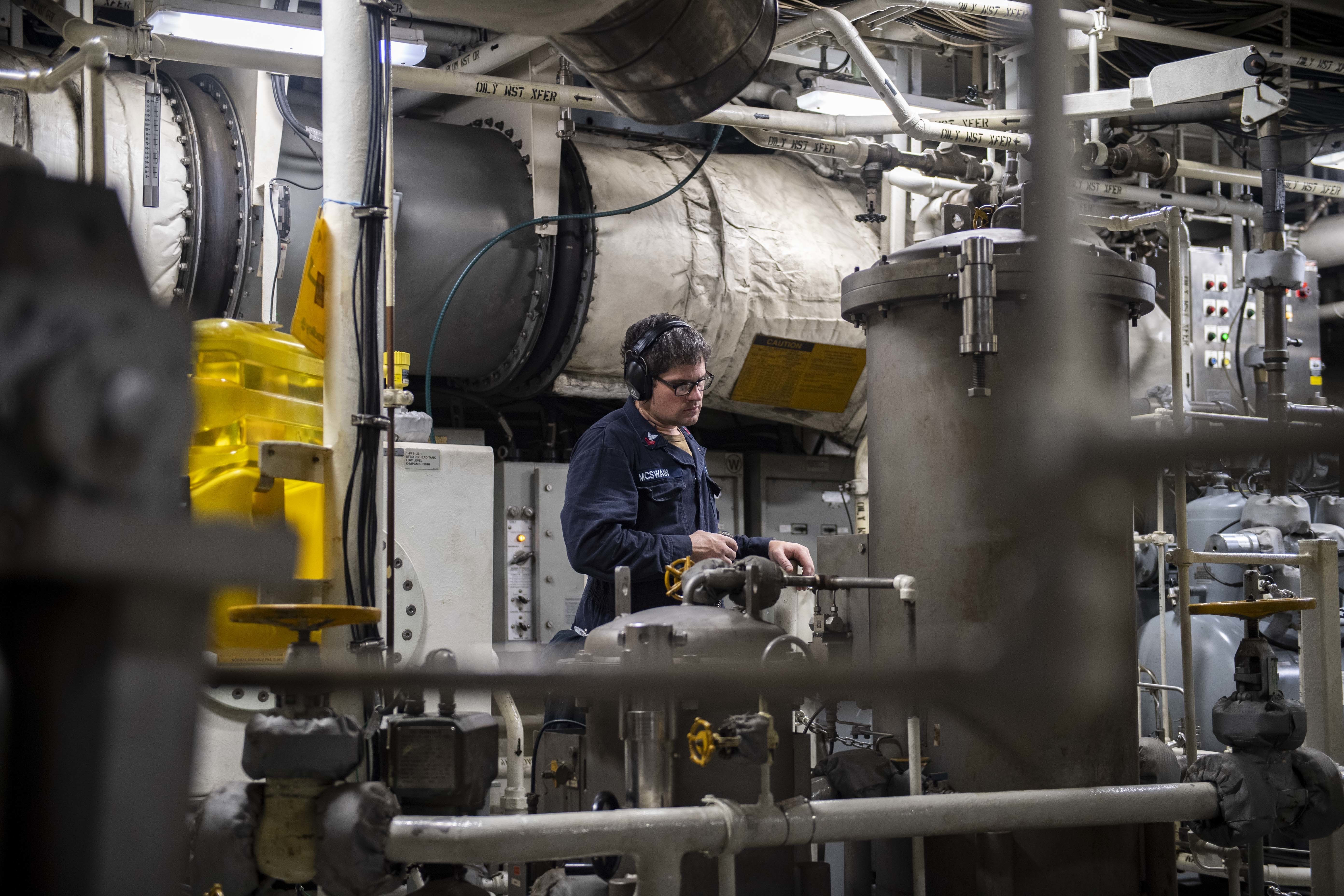
Gunners Mate 2nd Class Casey Nice lubricates the MK 50 Modular Weapons System aboard the Freedom-class littoral combat ship USS Detroit (LCS 7) on Sept. 10, 2020. Detroit is deployed to the U.S. Southern Command area of responsibility to support Joint Interagency Task Force South’s mission, which includes counter illicit drug trafficking in the Caribbean and Eastern Pacific. US Navy photo.
The Navy kicked off another study of the Littoral Combat Ship that is meant to follow up on the major 2016 study that reshaped how the LCS fleet is manned, trained and operated.
Commander of Naval Surface Forces Vice Adm. Roy Kitchener told USNI News in August that the 2016 study conducted by then-SURFOR Vice Adm. Tom Rowden was particularly effective at laying out a good training program, as well as a blue/gold crewing model for the ships that were divided into two squadrons: one in San Diego, Calif., for the Independence-variant hulls, and one in Mayport, Fla., for the Freedom-variant hulls.
But, Kitchener told USNI news, more work remains to be done on overseas maintenance, as well as addressing some lingering design reliability issues.
“Number one, we still continue to have some design problems on some of the engineering components on those ships,” he said.
“I think on the maintenance side there’s some more work to be done. We’ve now successfully had deployments out to 7th Fleet, we’ve had successful deployments to 4th Fleet. And we got some good lessons learned, and we need to kind of figure out, okay, what is our global maintenance [concept of operations]? We need to figure out how are we going to repair these things forward. … And what does that maintenance team look like?” he continued.
The 2016 study “sort of set up what we thought it looked like, but I would argue that, based on what we now know and what we’ve done (during early operations), it might be a little bit different than that. So there’s some work we need to put into that as well.”

Special Warfare Combatant Craft Crewman position for recovery as the Freedom-variant littoral combat ship USS Sioux City (LCS 11) participates in a multi-lateral exercise on Sept. 13, 2020. Sioux City is deployed to the U.S. Southern Command area of responsibility to support Joint Interagency Task Force South’s mission, which includes counter illicit drug trafficking in the Caribbean and Eastern Pacific. US Navy photo.
Naval Surface Force Pacific spokeswoman Cmdr. Nicole Schwegman told USNI News that Kitchener’s follow-up LCS study had formally kicked off in September.
“The 2016 study identified several areas for future exploration, including command and control, training, global expeditionary maintenance and logistics. Now that we’ve executed rotational deployments in 2019 and 2020, we have an experience base from which to draw,” she said.
“It’s important to note that this is not a referendum on the 2016 study, rather, it is logical follow-on work – work that we can now do based on what we now know. Changes implemented as a result of the 2016 study helped stabilize the program and were incorporated into the rotational deployments that began in earnest last year. We’ve learned a lot from those deployments, but we still have more work to do, and the Navy wants to take a close look at how we’re employing the ships to make sure they meet the specific mission needs of our Fleet Commanders.”
Specifically, she said, the study has four main lines of effort: LCS operations, training, organization, and maintenance. Many of the questions the current study is looking at were recommended in the 2016 report, which included a section on areas for future consideration.
Supporting Kitchener’s study is what the vice admiral called an LCS strike team being led by the Program Executive Office for Unmanned and Small Combatants. Rear Adm. Casey Moton, who leads the PEO, said the aim of his work is to “improve LCS reliability and maintainability.”

Hull Maintenance Technician 1st Class Chris McSwain inspects machinery in the main machinery room aboard the Freedom-variant littoral combat ship USS Detroit (LCS 7) on Sept. 9, 2020. Detroit is deployed to the U.S. Southern Command area of responsibility to support Joint Interagency Task Force South’s mission, which includes counter illicit drug trafficking in the Caribbean Sea and eastern Pacific Ocean. US Navy photo.
Moton said last week during an online Navy League event that the first production line LCS hulls – beginning with USS Milwaukee (LCS-5) – had conducted overseas operations in U.S. 7th Fleet and U.S. 4th Fleet, as well as significant local operations in San Diego and Mayport. For many years, only the first four hulls had actually deployed overseas, and since those early ships have some different design features and components compared to the production line ships, their reliability and maintainability would be different.
“The ships have been successful in accomplishing their missions in support of our fleets and combatant commands, but the reliability must improve. We are gathering lessons learned in material issues and maintenance and support methods. Our focus on reliability is in key ship systems, such as propulsion and controls, deck and handling systems, and radars,” he said.
“We have stood up an LCS strike team, a cross-functional team of our LCS shipbuilders and sustainers and engineers and logisticians who, in cooperation with the fleet, are using a metrics-based approach focused on availability drivers to generate and execute action plans. The action plans include material fixes to be installed on in-service ships, although many have already been done so in construction. The team is also focused on maintainability, working with our [Regional Maintenance Centers], in-service engineering agents, and [original equipment manufacturers] to make the support process more efficient.”
“And, although OEMs are a key part of LCS sustainment, we want to ensure the Navy has the ability to better organically support the ships, including in improvements in Navy ability to troubleshoot, to source spare parts, and to perform appropriate levels of maintenance ourselves,” he continued.
“We are working with OEMs, showing them the metrics for how their systems are doing, and working to get the data and tools we need to be self-sufficient at the right level. I’m committed that our team is going to make a difference here, relying on the lessons learned, and the metrics and the drivers, and drive up availability for the fleet commanders.”
During the August interview, Kitchener said that “we’re really good at fixing the problems we have with them right now, but … we need to do better than that. They need to not be breaking the way they are. And I think we’ll get to some resolution there. I’ve been encouraged by the work [Naval Sea Systems Command has] been doing, but we cannot let off on that. So that’s number one, getting that design reliability built back into some of those systems.”
"follow" - Google News
October 05, 2020 at 11:59PM
https://ift.tt/2GJhcZu
Naval Surface Forces Kicks Off Follow-On LCS Study To Refine Maintenance, Reliability Issues - USNI News
"follow" - Google News
https://ift.tt/35pbZ1k
https://ift.tt/35rGyU8
Bagikan Berita Ini














0 Response to "Naval Surface Forces Kicks Off Follow-On LCS Study To Refine Maintenance, Reliability Issues - USNI News"
Post a Comment